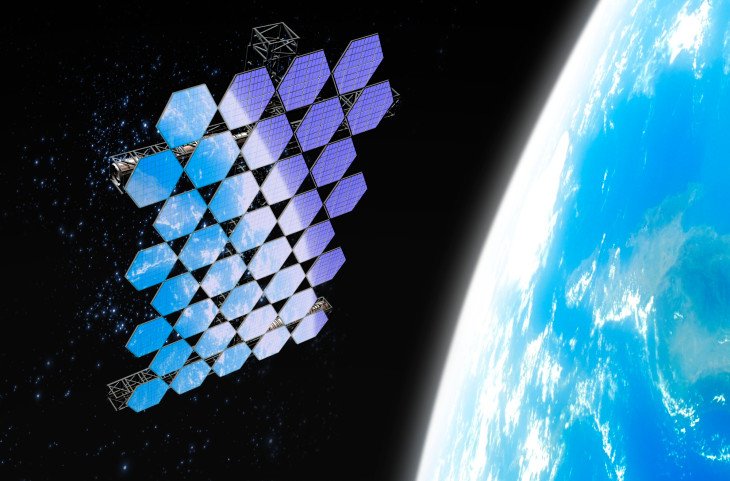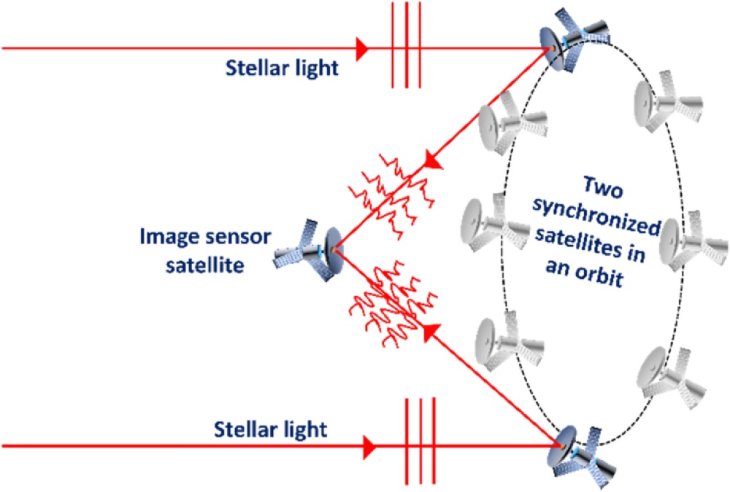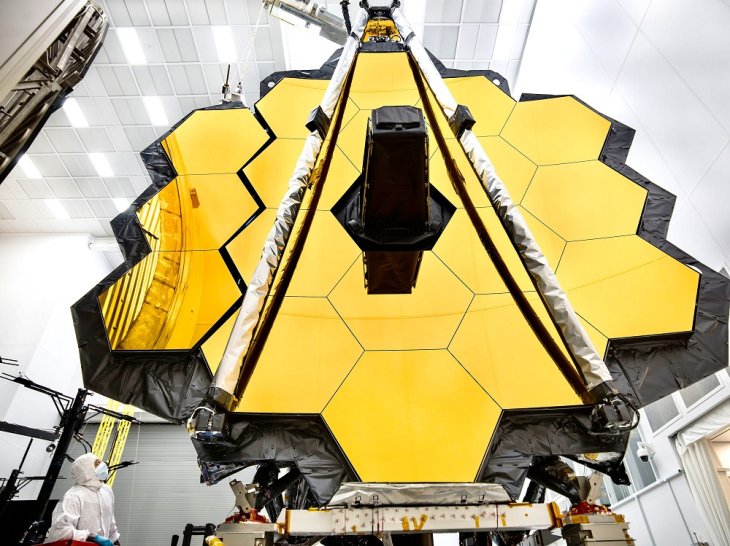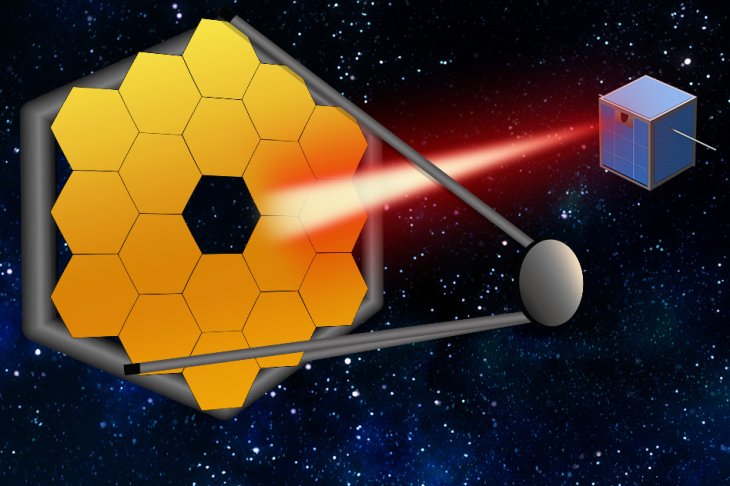Soon, Giant Telescope Will Be Replaced With Swarms Of Tiny Satellites
Dhir Acharya - Feb 08, 2019

Instead of sending such a giant, complicated telescope into space, we can use swarms of tiny satellites which is easier and cheaper.
- NASA Wants To Assemble Telescopes In Space Instead Of On Earth
- Russia Can No Longer Control Its Only Space Telescope
We’re counting down to the launch date of the James Webb Space Telescope, which is a huge, complex engineering structure. While that news is pleasant to hear, it’s been revealed by a new study that instead of huge telescopes like the Webb, we will use swarms of smaller spacecraft working together.

According to Ben-Gurion University in Israel, using a network of tiny spacecraft brings about one advance in capabilities: synthetic aperture systems. In this technique, there is a camera moving around in space to capture images from smaller spacecraft, then it analyzes the data and produces an image like taken by a large camera. In short, it synthesizes a larger aperture.
The research team published their study in Optica, detailing how they interestingly leapfrog the current method. In particular, a pair of satellites moves around the edge of a circle in synchrony. During that movement, they collect data and beam it to a third satellite which is fixed at one position. The picture below illustrates how the technique works.

Research team leader Angika Bulbul, a BGU graduate, explained in a news release that it requires only a small part of the telescope lens to capture quality images.

To say it in another way, the system allows capturing pictures with the same quality with cameras 50 times the size. The result would be such a thrill anywhere, but it’s even more important when used in space. Putting a giant and complex telescope into space which involves extreme complication and effort, the team puts a lot of eggs in one basket.

The James Webb Space Telescope
However, if we use a network of satellite, and one fails, we can easily replace it with another one, which opens a new door for the field. As stated by Bulbul, the new method can cut down on time, cost, and the required material compared with the conventional way.
One thing to keep in mind, though, the new method needs to work with the highest accuracy. Additionally, it’s hard to keep one satellite staying at one exact place, let alone monitor it to move around with precision within fractions of a millimeter.
At present, to keep on track, reliable fixed light sources like bright stars are used as reference points in calculating many things relating to satellites’ operations. Several astronomers have even created artificial stars for the satellites to use.

MIT researchers have thought of a guiding satellite
There are both advantages and disadvantages in each method but researchers at MIT come up with a more permanent, accurate solution: a guiding satellite placed thousands of miles from Earth and trains a strong laser on the planet as well as its orbital region.
This would be a visible, steady, and reliable source of light that satellites can use to calculate their position and minimize changes to their imaging apparatus due to radiation and heat.
These technologies are both still in developing phase but perhaps in only the next few years, we will see swarms of satellites sent to outer space to form a giant synthetic telescope capturing images of our universe.
Featured Stories

Features - Jul 01, 2025
What Are The Fastest Passenger Vehicles Ever Created?

Features - Jun 25, 2025
Japan Hydrogen Breakthrough: Scientists Crack the Clean Energy Code with...

ICT News - Jun 25, 2025
AI Intimidation Tactics: CEOs Turn Flawed Technology Into Employee Fear Machine

Review - Jun 25, 2025
Windows 11 Problems: Is Microsoft's "Best" OS Actually Getting Worse?

Features - Jun 22, 2025
Telegram Founder Pavel Durov Plans to Split $14 Billion Fortune Among 106 Children

ICT News - Jun 22, 2025
Neuralink Telepathy Chip Enables Quadriplegic Rob Greiner to Control Games with...

Features - Jun 21, 2025
This Over $100 Bottle Has Nothing But Fresh Air Inside

Features - Jun 18, 2025
Best Mobile VPN Apps for Gaming 2025: Complete Guide

Features - Jun 18, 2025
A Math Formula Tells Us How Long Everything Will Live

Features - Jun 16, 2025
Comments
Sort by Newest | Popular